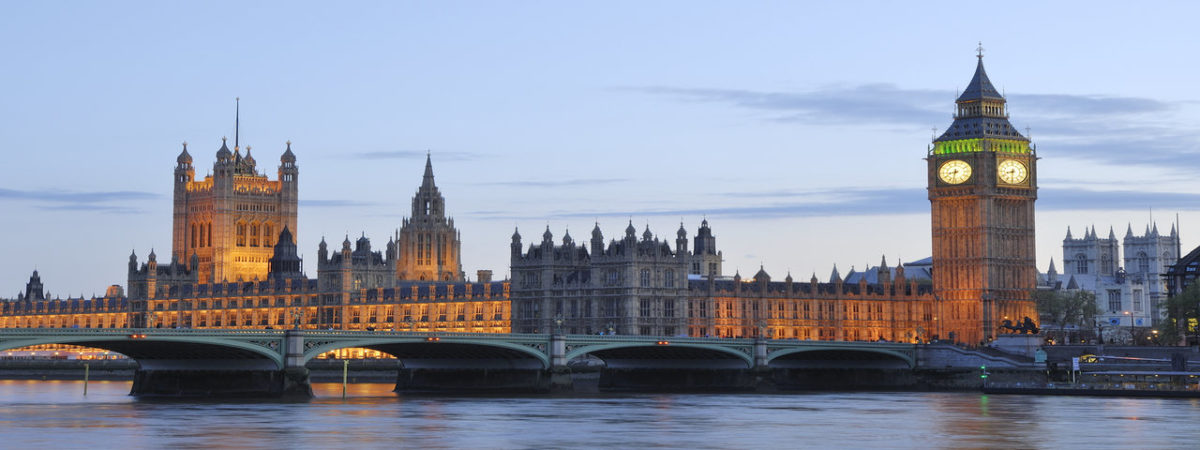Government spending: ‘Back to the 30s’ claims are nonsense on stilts
SUGGESTED



Some politicians have asserted that Britain’s government spending on public services will be returning to 1930s levels. Perhaps such a distortion of the figures is to be expected from politicians. But the supposedly politically neutral BBC has also made such assertions. Furthermore, even documents released by the Office for Budget Responsibility (OBR) have been interpreted to suggest that Britain will be going back to the interwar period when it comes to government spending levels. This claim is a massive distortion of reality. However, the measurement issues involved are complex and confusing. It is easy to see how such a grave misrepresentation can arise if people are not up to speed with the historic data concerned.
Firstly, it should be noted that even if government spending as a proportion of national income were to be the same as in the 1930s, real government spending would be much higher because of the massive increase in national output during the intervening decades.[1] However, let’s assume that the relevant metric is spending as a proportion of national income. The idea that we are going back to the 1930s arises because it appears that economic commentators choose to ignore both the details and the principles of national income accounting.
When computing the government spending share, it should be calculated as a proportion of national income (GDP) at factor cost. This figure can be significantly different from the more widely quoted national income at market prices. Reported national income at market prices will rise if, for example, value added tax is increased, even though there is no additional underlying output. Similarly, if the government subsidises goods and services (which it tends not to do so much today, but has in the past) the recorded national income figure at market prices will be artificially reduced. So, without question, national income at factor cost is the appropriate measure to use. It can be further debated whether it should be gross or net national income[2] that is used and also whether domestic or national product figures are the best to use. However, GDP at factor cost is certainly better than the GDP at market prices measure often used in headline figures.
In the past, statistics have been published for the share of general government expenditure in factor cost UK GDP back to 1870 using historical sources and calendar year data. Subsequent changes to the official statistics mean that it is not possible to compare previous historical figures with the current ones. However, the historical GDP figures can be rendered more consistent with the current definition by rescaling the pre-1948 figures so that they are consistent with today’s definitions.
What does this exercise reveal? On the basis of these reworked figures, the general government spending ratio was 28.5 per cent of GDP at factor cost in 1934 and 31.8 per cent in 1938 – i.e., after a major increases in military spending just before the outbreak of war. Total general government expenditure then rose dramatically during World War II and declined in peacetime until the early 1960s before fluctuating markedly on a generally rising trend from the mid-1960s to the 1990s. The ratio was brought down to 40.9 per cent in 2000, when Gordon Brown was in his ‘prudence’ phase (and implementing the previous Conservative government’s spending plans) and reached a recent peak of 51 per cent in 2010. The ratio has declined slightly since, and the 2014 outturn seems to have been 47.4 per cent based on the published figures for the first three quarters. Thus the current ratio is 1.5 times higher than the ratio in 1938. It hardly seems likely that, from this point, spending is going to fall to 1930s levels.
The numbers in the Autumn Statement suggest that the government is aiming for public spending of not quite 40 per cent of GDP at factor cost (on consistent definitions) in 2019-20: some 8 percentage points higher than was recorded in 1938 and 10.5 percentage points more than when Keynes’s General Theory was published in 1936. It is also worth noting that the target for 2019-20 is higher than the spending ratio recorded in every year between 1954 and 1964. Indeed, it is very similar to the ratio in 2000 under the last Labour government. If 2019 is going to be “back to the 1930s”, then the Cool Britannia era of the beginning of the millennium was also a throwback to the 1930s. Somehow, this went unnoticed then.
As a percentage of national income, government spending will be some 8 to 11 percentage points higher than in the mid-to-late 1930s when the Autumn Statement forecasts expire. But this is only the beginning of the story. In 2019-20, the government expects to be spending 3.4 per cent of factor-cost GDP on debt interest and around 2.3 per cent on defence. In the inter-war period, cash expenditure on defence increased by 3½ times between its low point in 1932/33 and 1938, increasing its share of national income from some 2.6 per cent to 6.8 per cent. The corresponding figure on debt interest was around 9.4 per cent of national income at its peak in 1926 and was still 5.8 per cent in 1938.
In other words, government spending on non-defence and non-debt interest was around 19.2 per cent in 1938. This compares with 34.1 per cent of national income projected to be spent on non-debt interest, non-defence items in 2019-2020. In other words, the sort of public services on which the left like to see money spent (the non-nightwatchman functions of the state) will see 14.9 percentage points more – or 1.8 times as much – spent on them as a proportion of a much bigger national income in 2019-2020 than was spent immediately before World War II.
The final question that remains is how such apparent nonsense about the government spending ratio gained so much traction in the first place? Either the people responsible for spreading this myth were ignorant of the well-documented trends in the share of the state in national output – which does not say much for their basic economic competence – or they were being deliberately cavalier in their presentation of the facts.
[1] In cash terms, total general government spending in 2014 was 463 times its 1938 level, while money GDP was 300 times its 1938 level using the factor cost measure and 315 times using the alternative market price measure of GDP.
[2] Net national income subtracts capital depreciation and is a superior measure of the sustainable resource base. Unfortunately, there are major problems measuring depreciation, which is why the gross measure is preferred. A similar comment applies to market-price GDP – i.e., it is inferior conceptually to the factor cost measure but easier to calculate.




